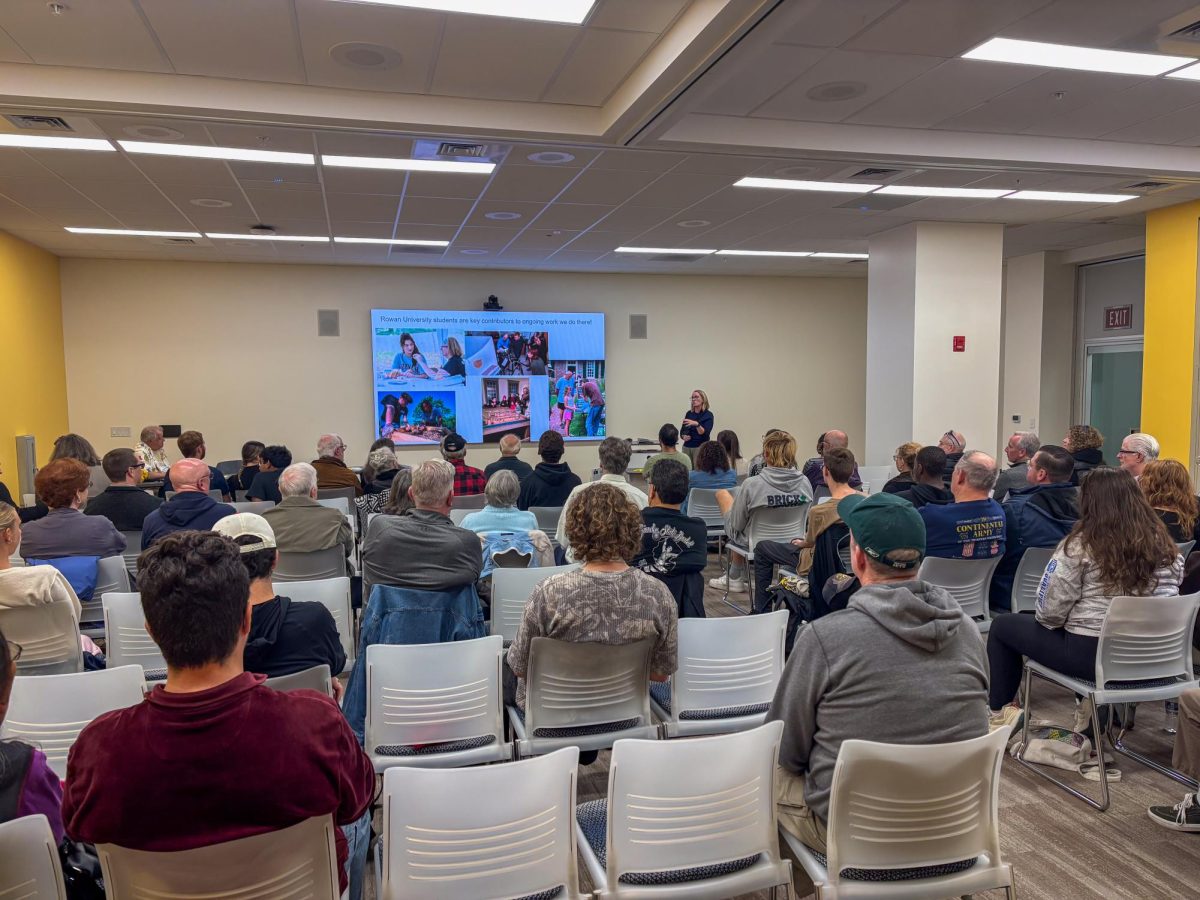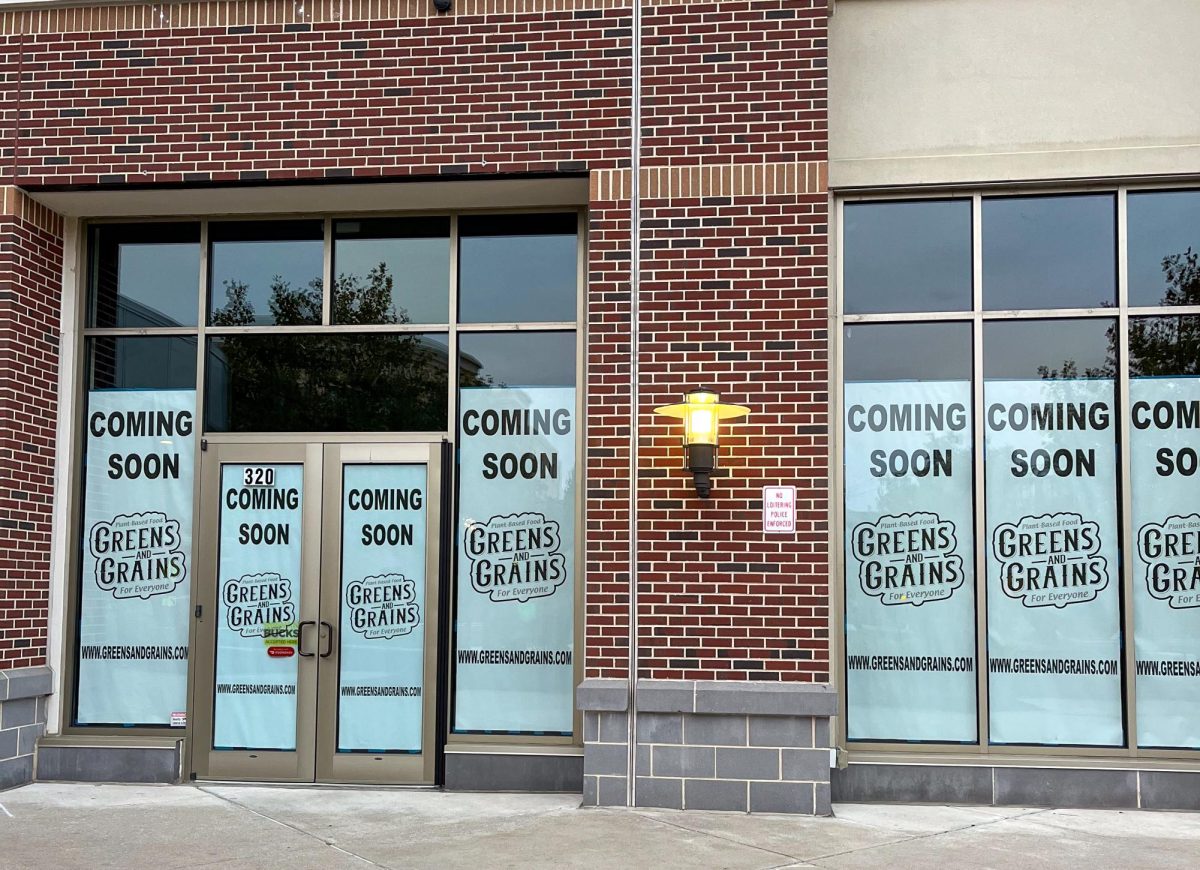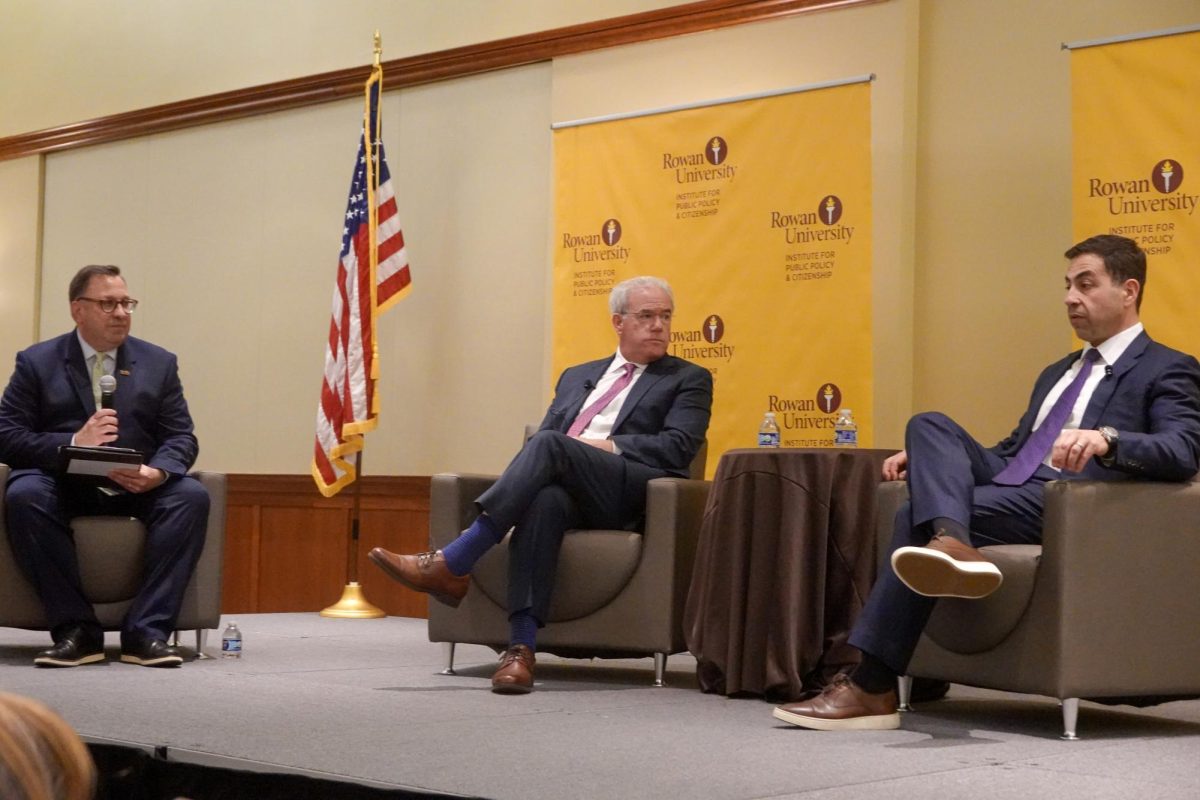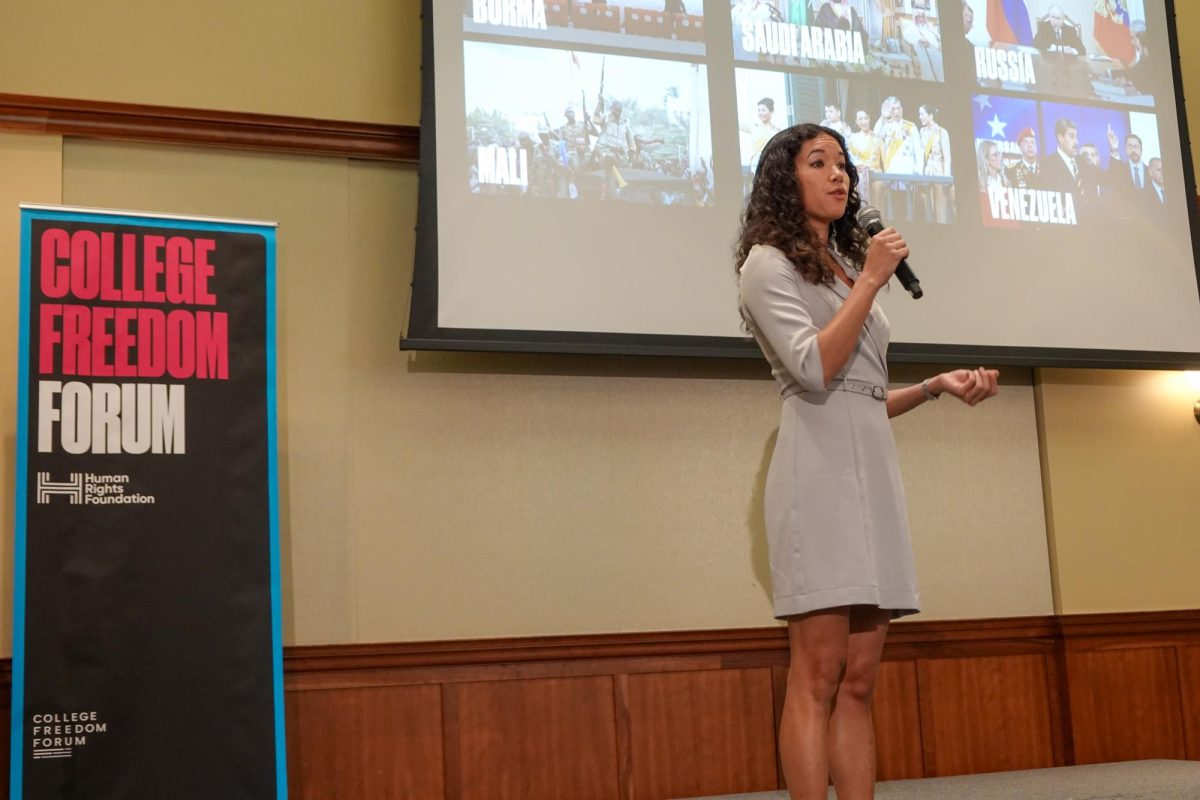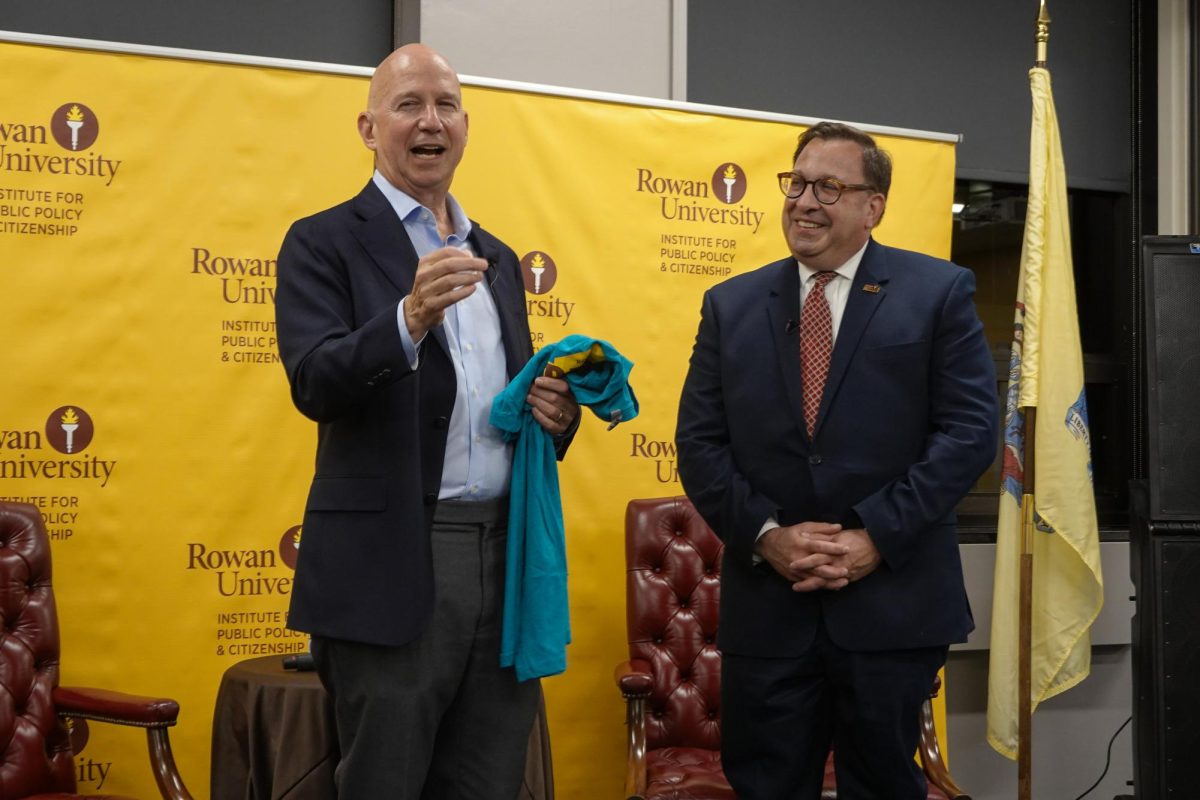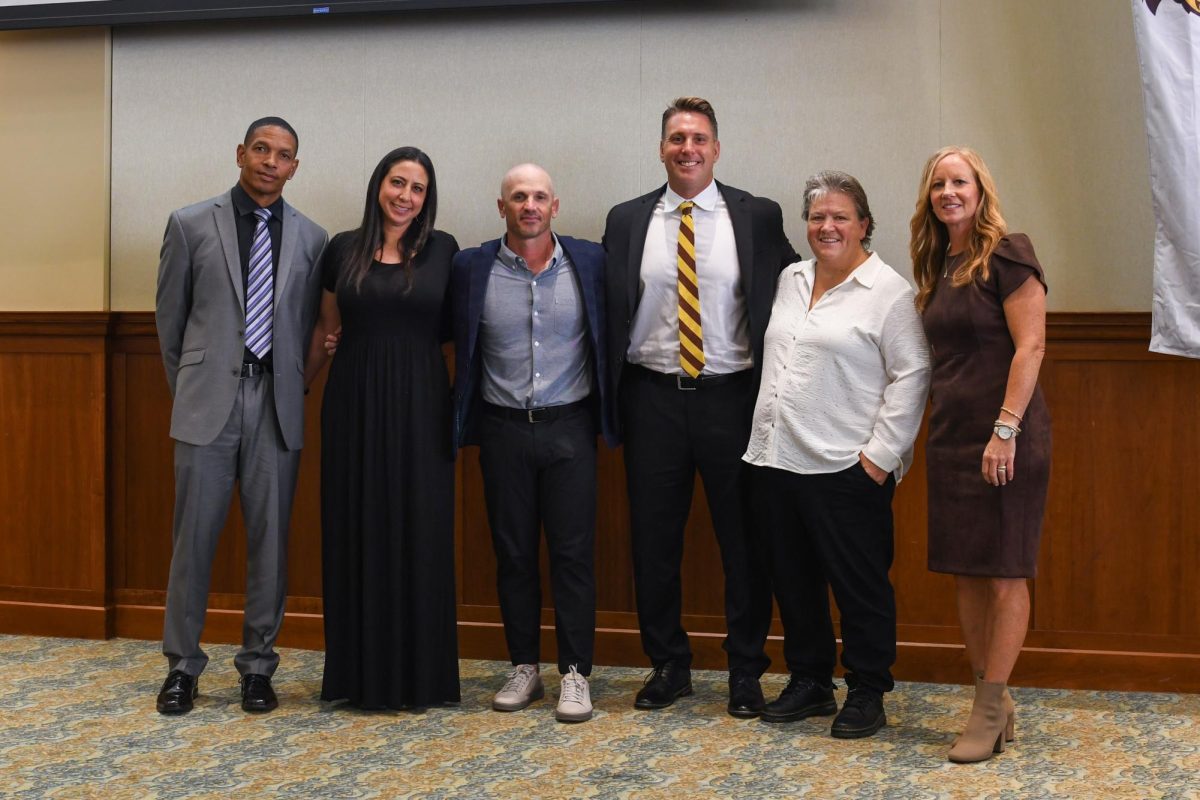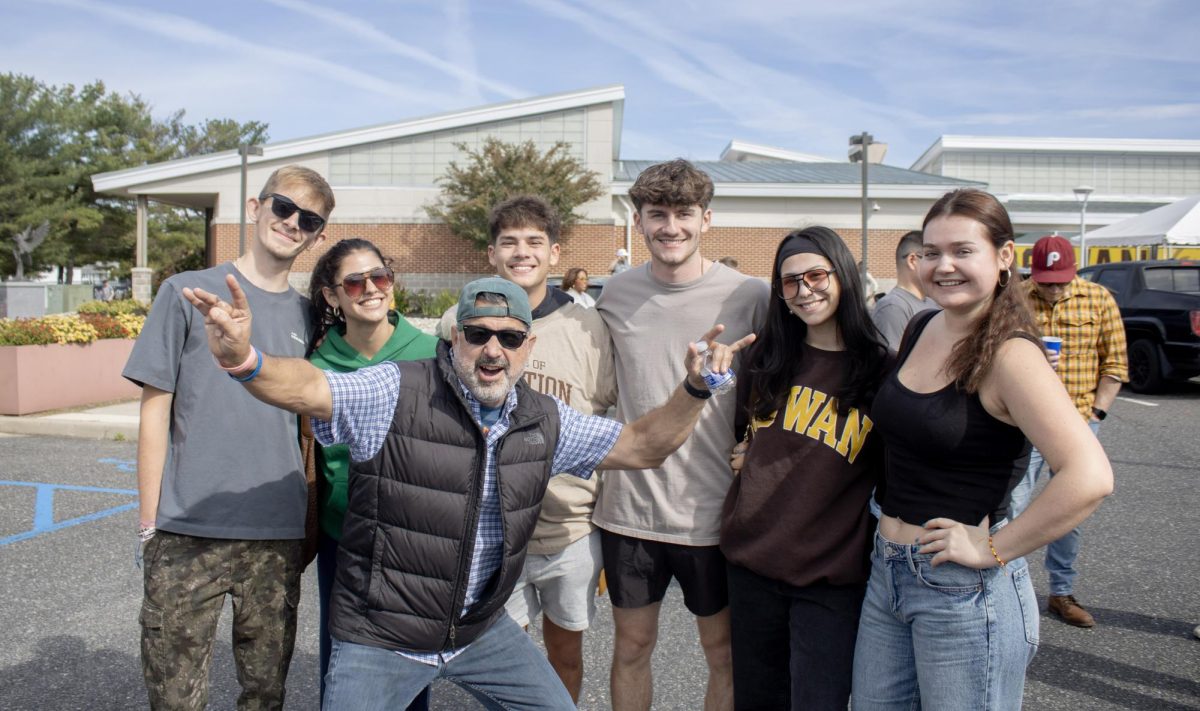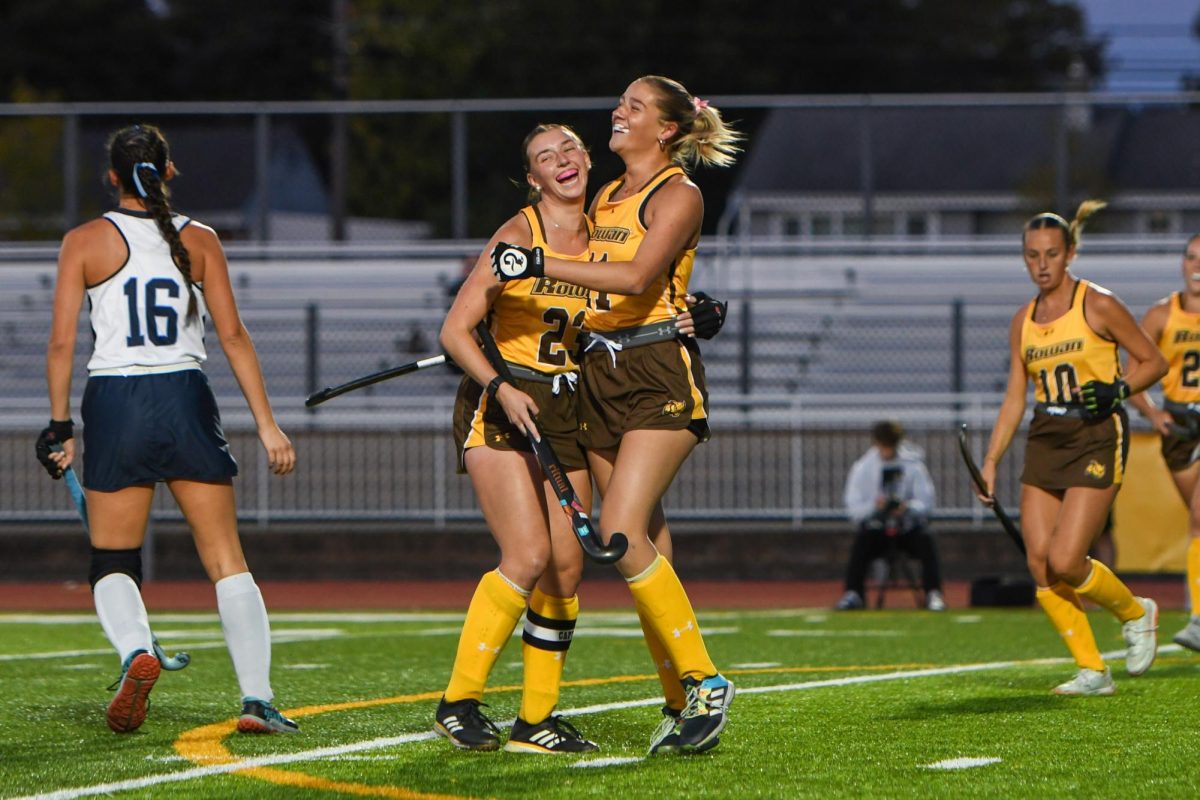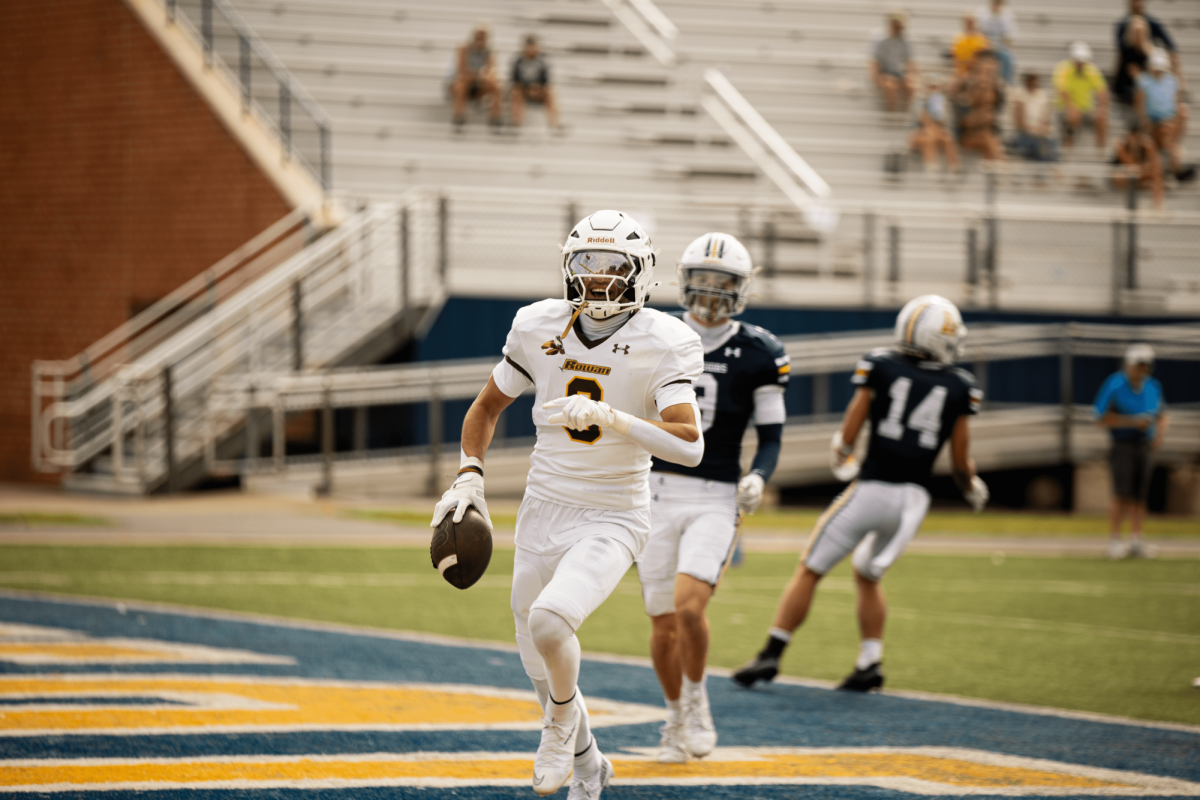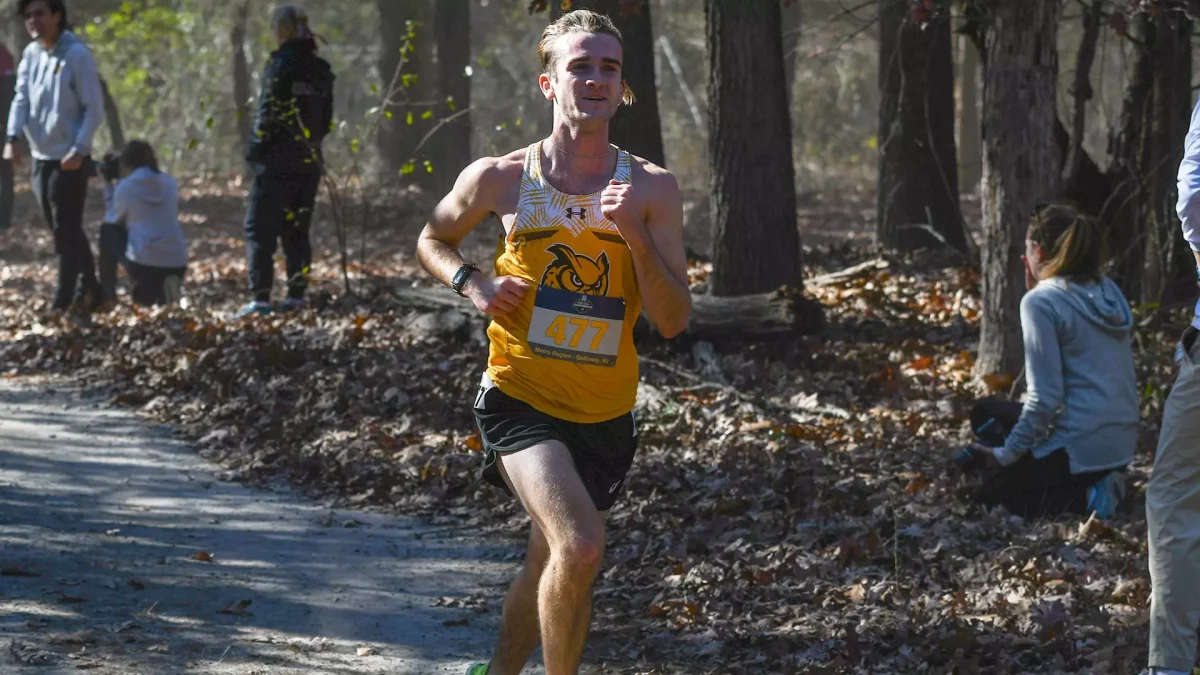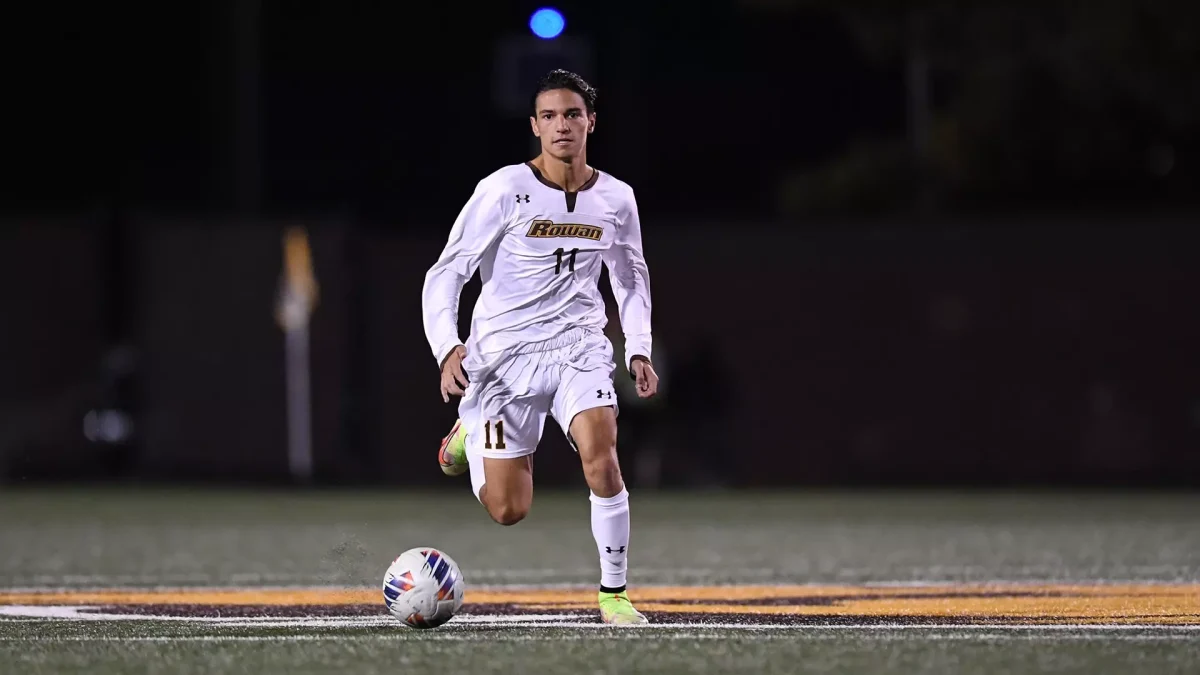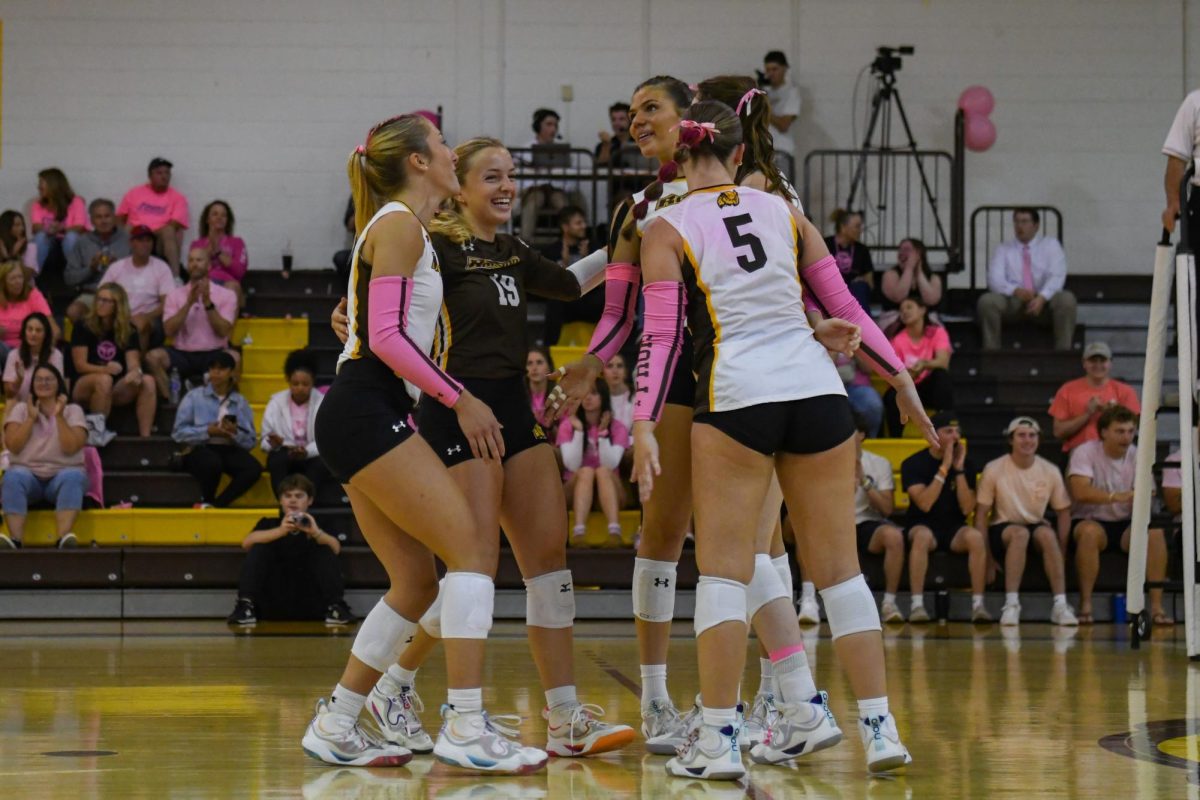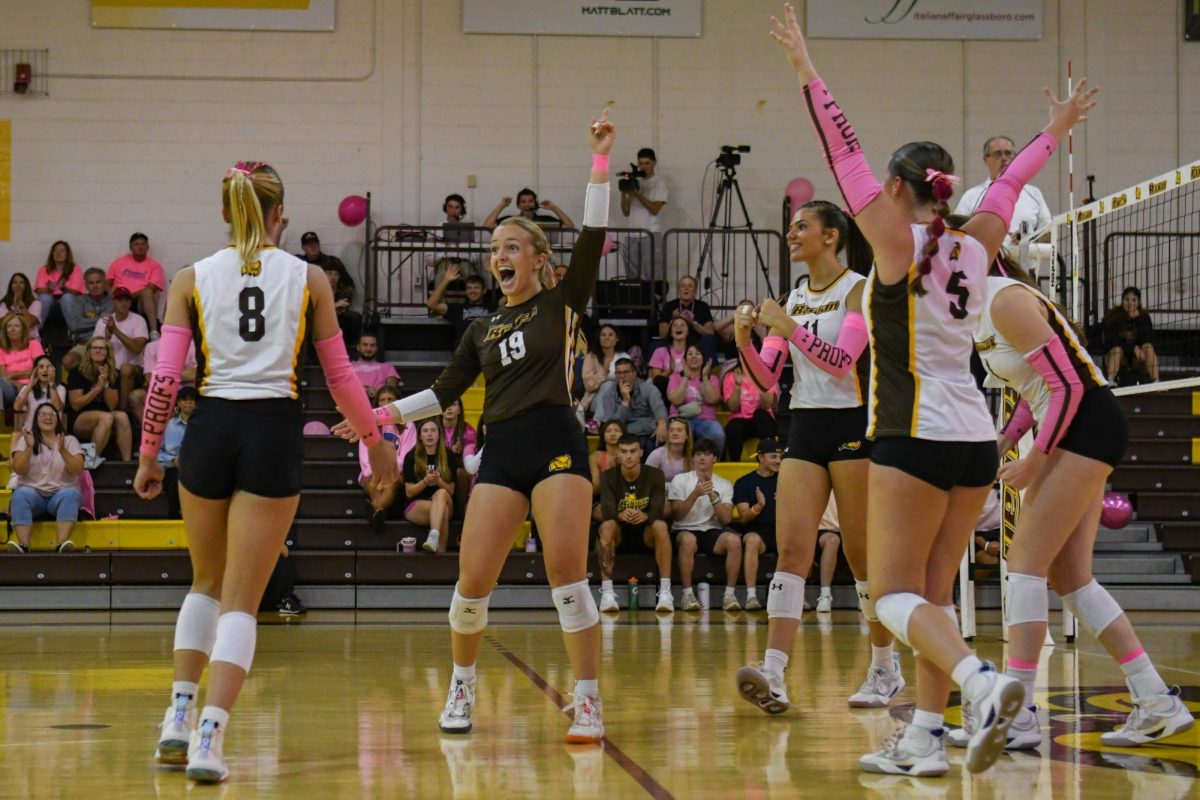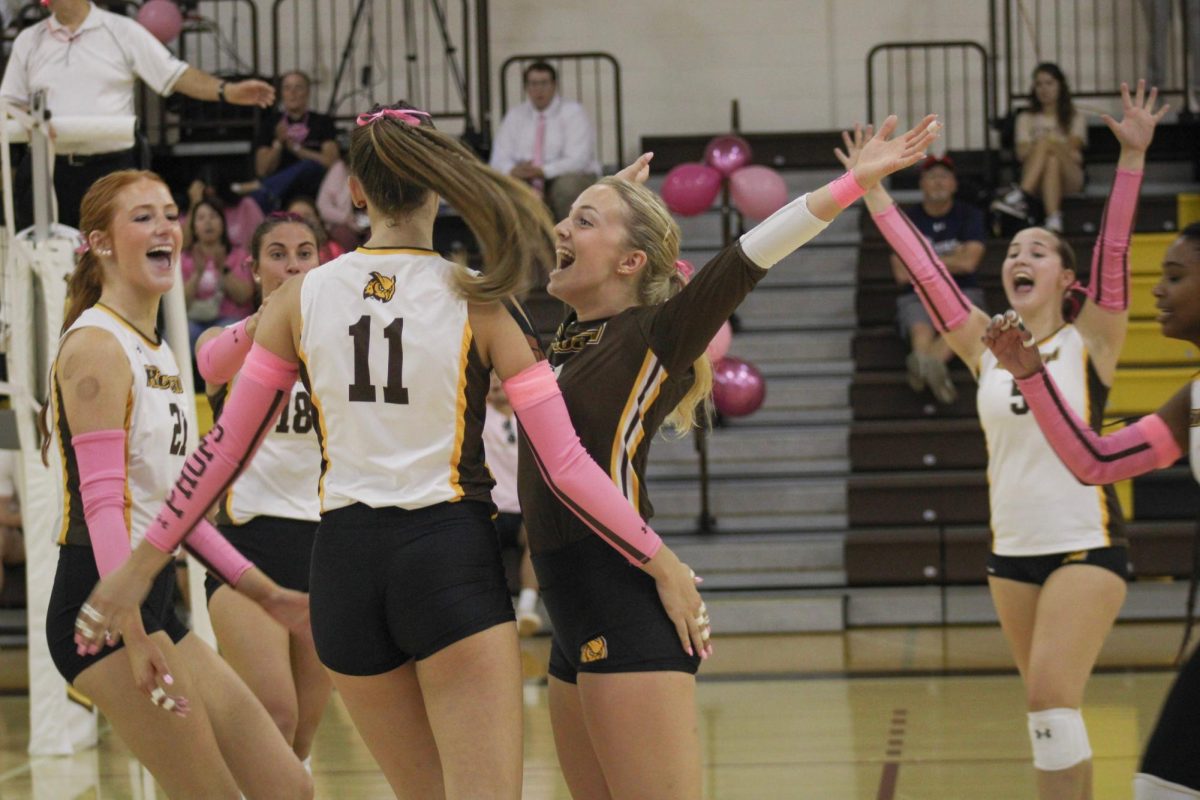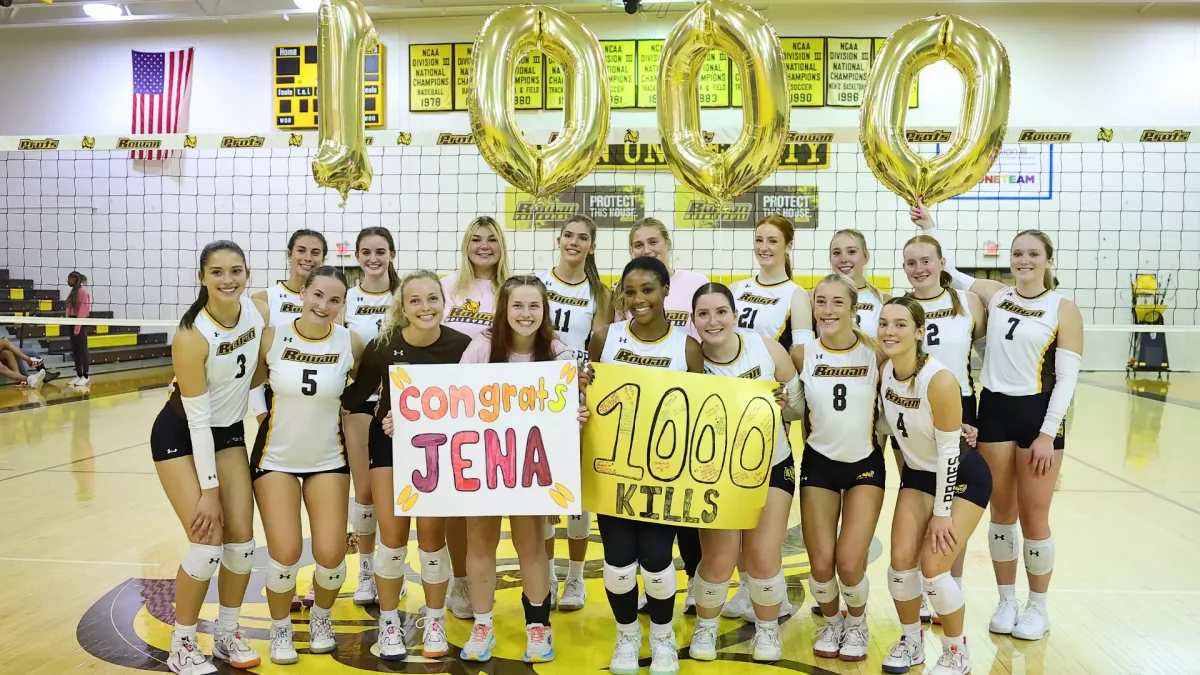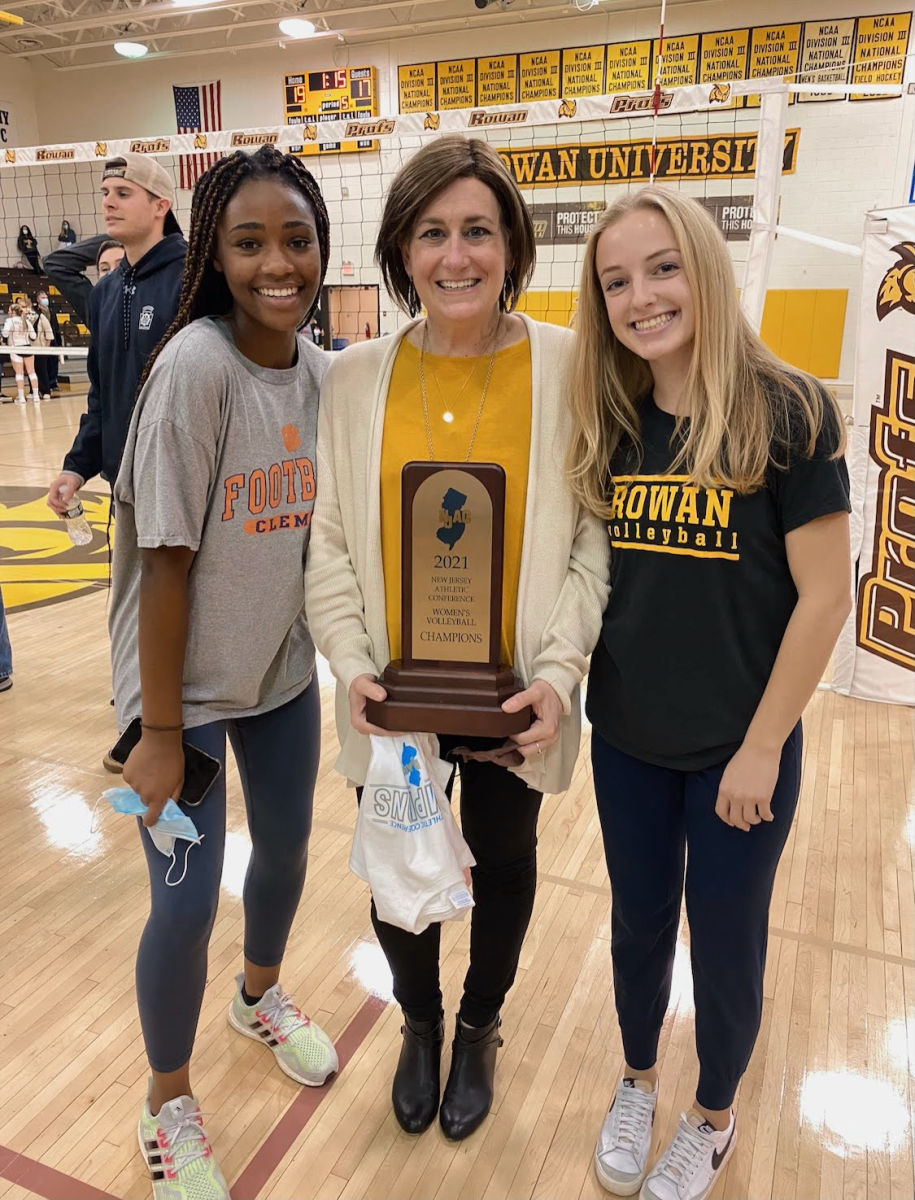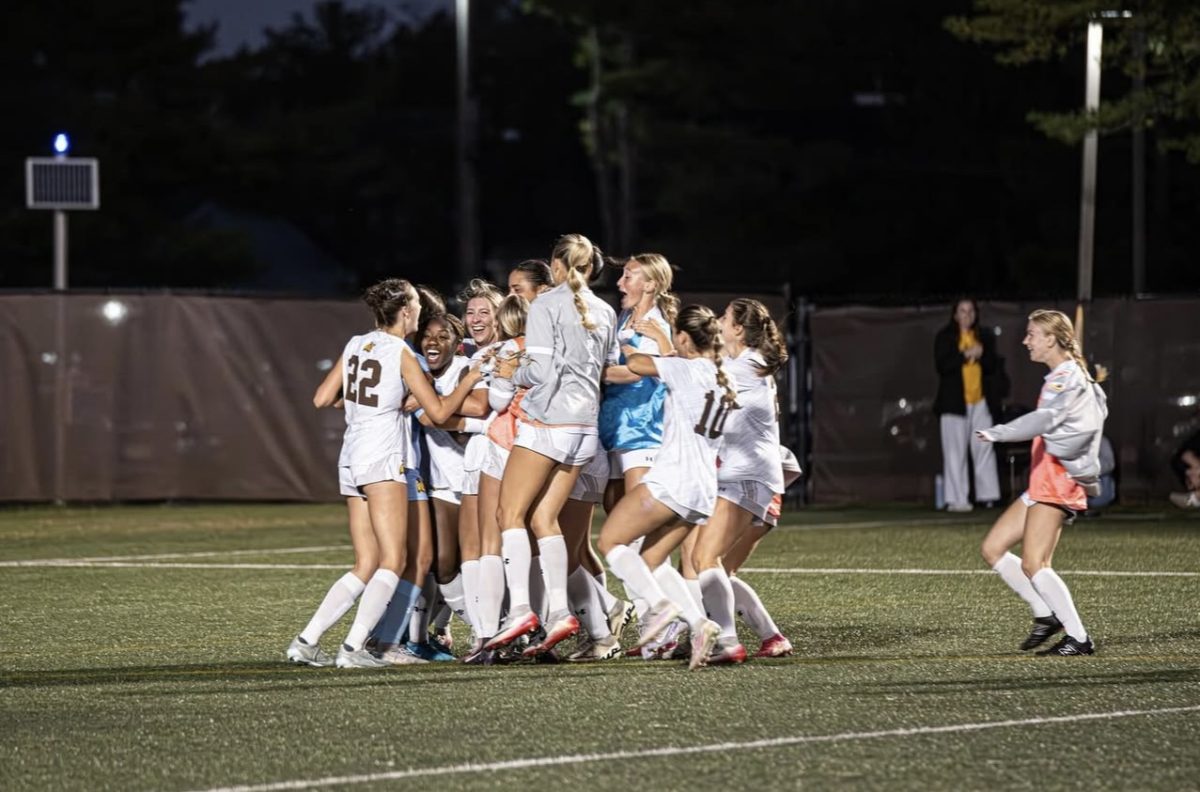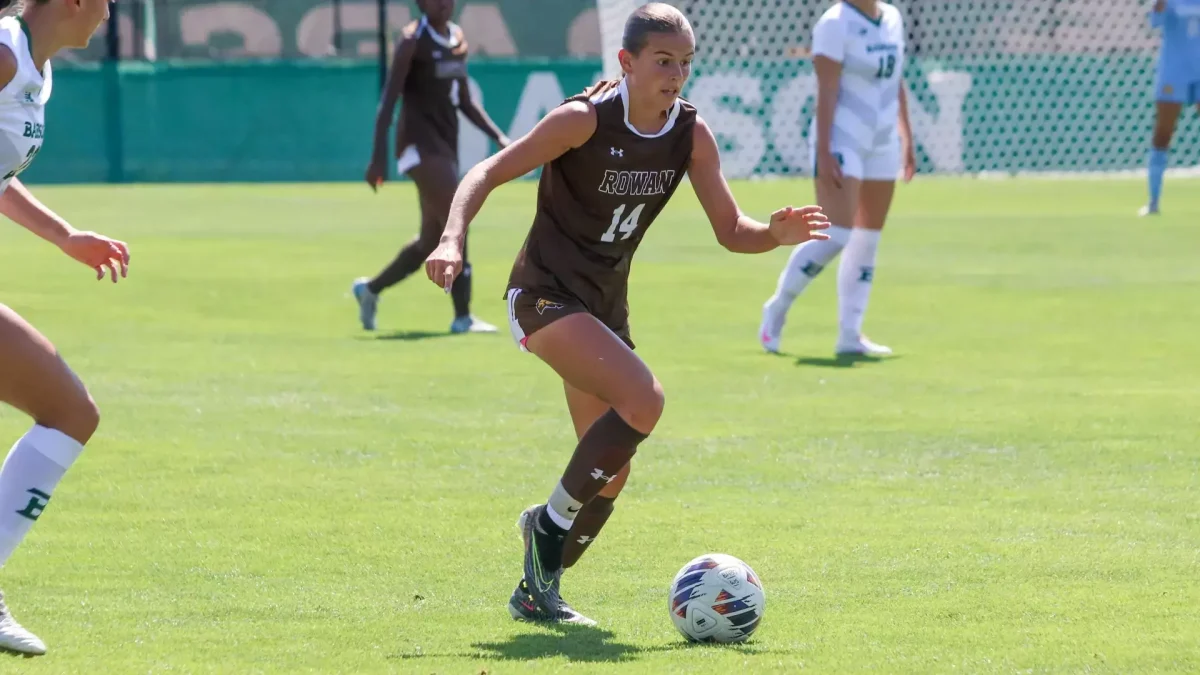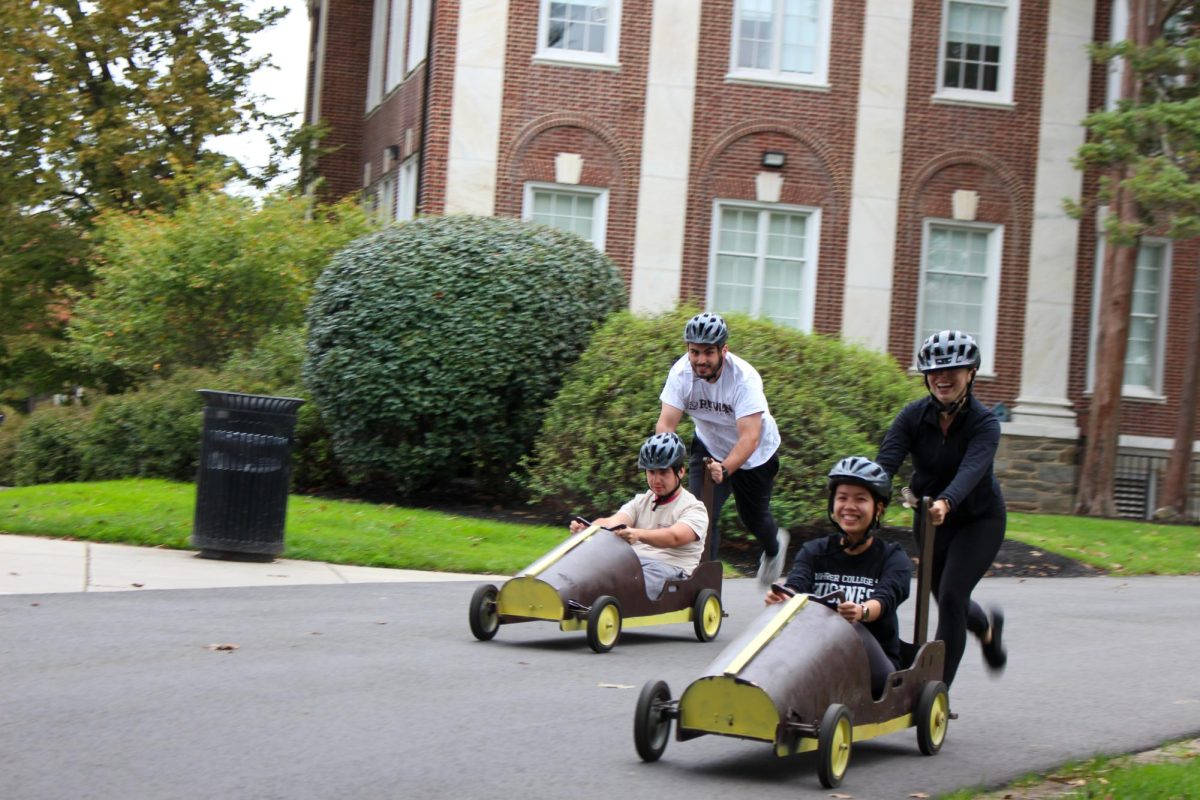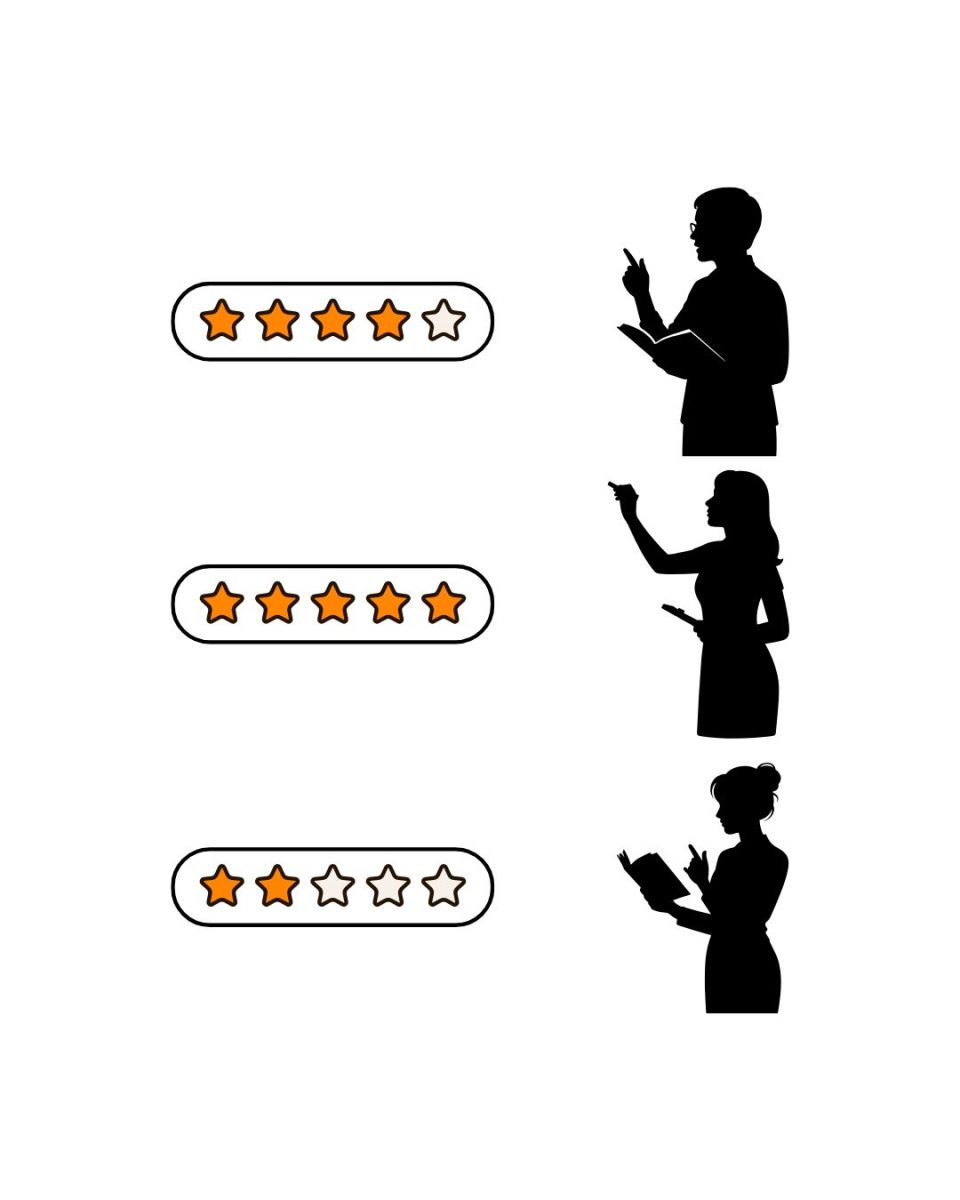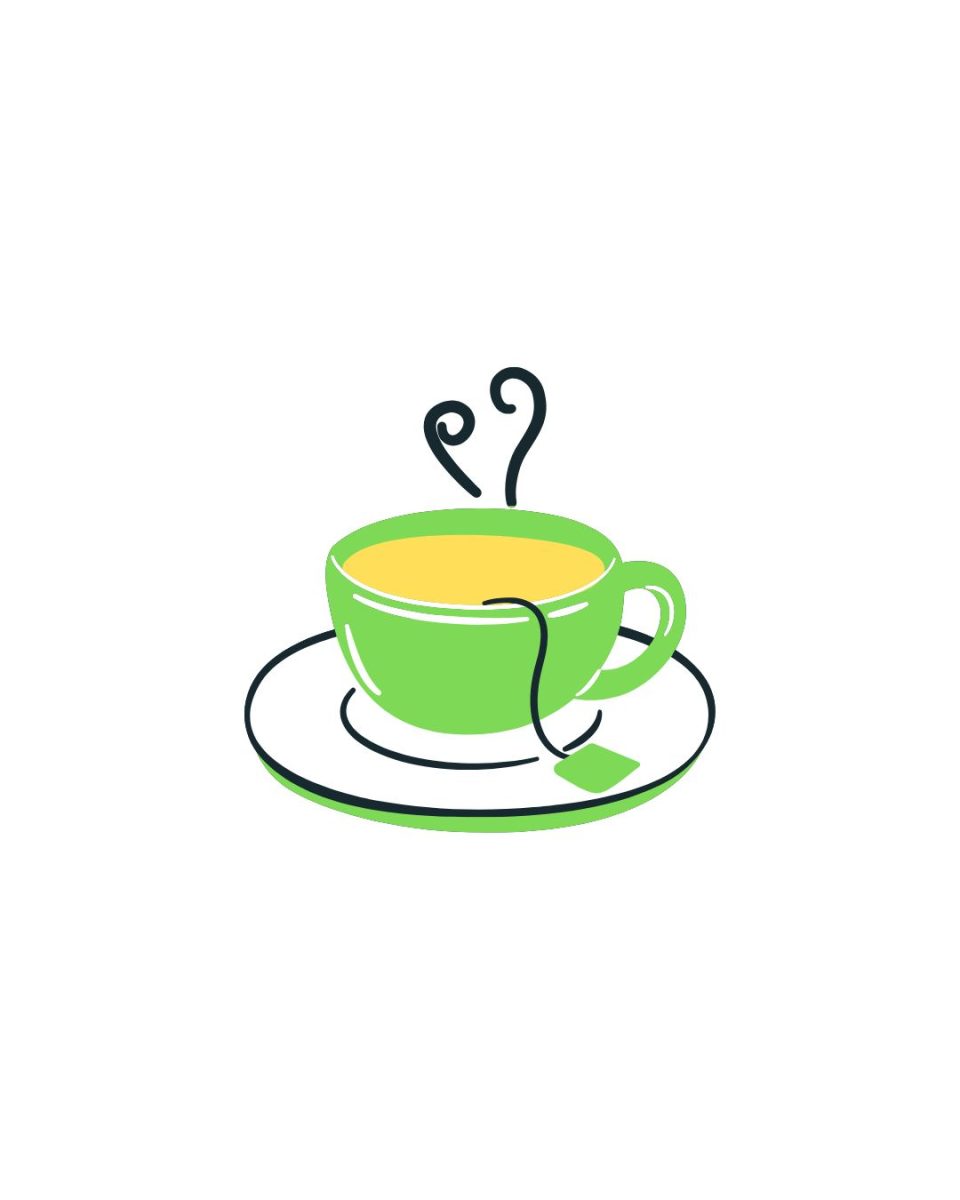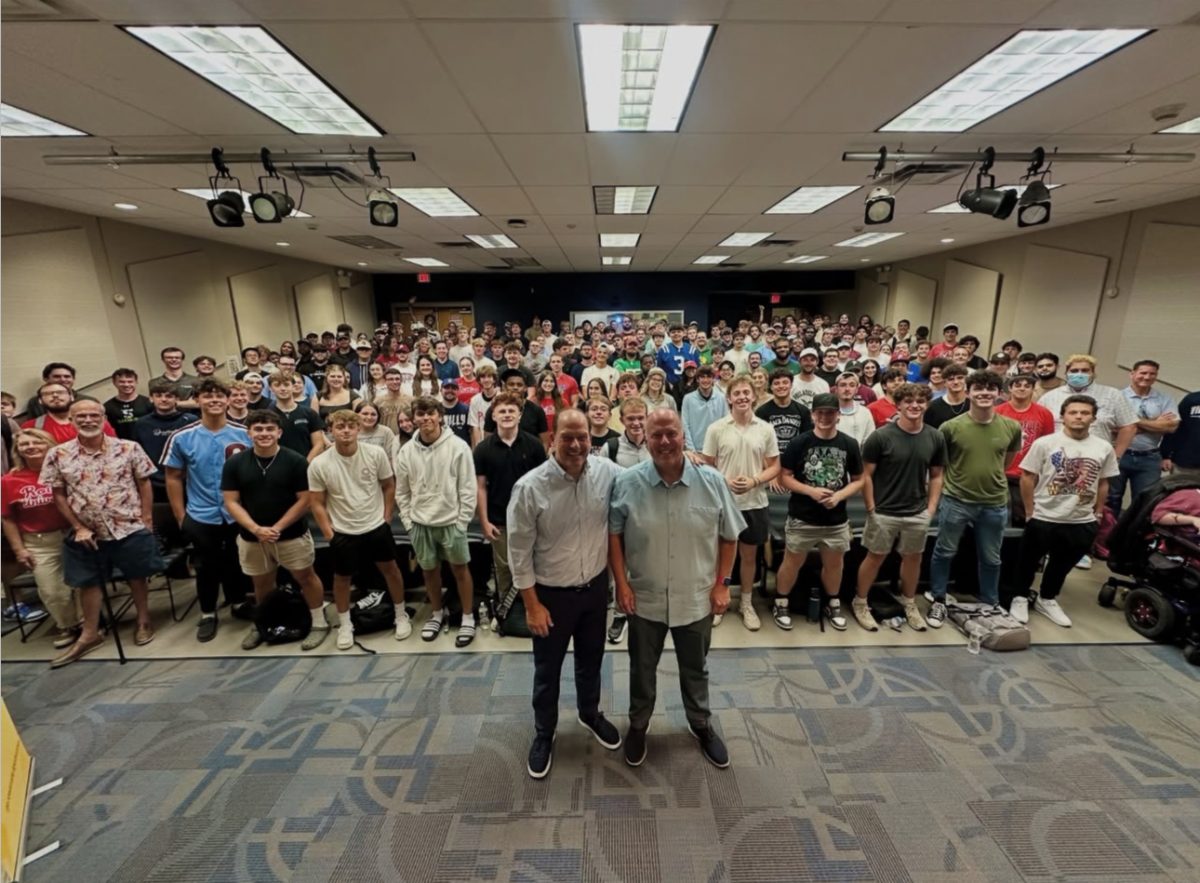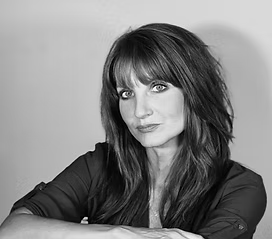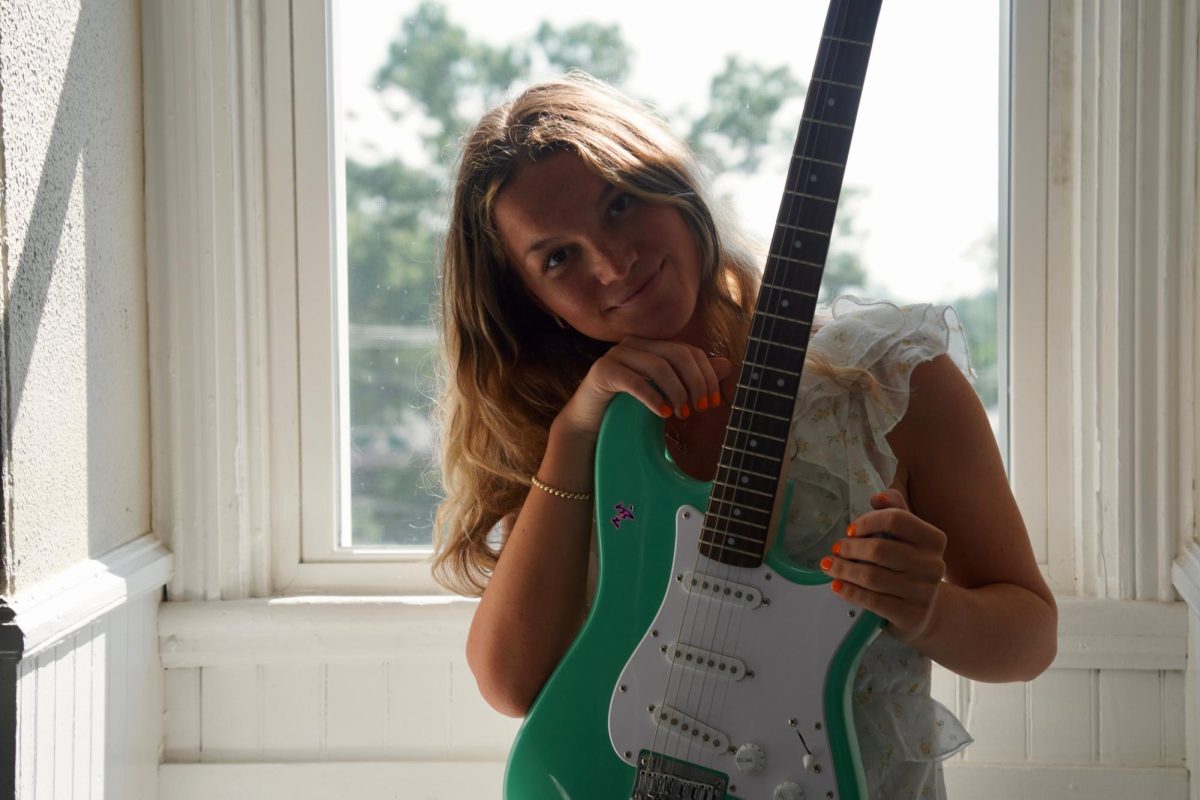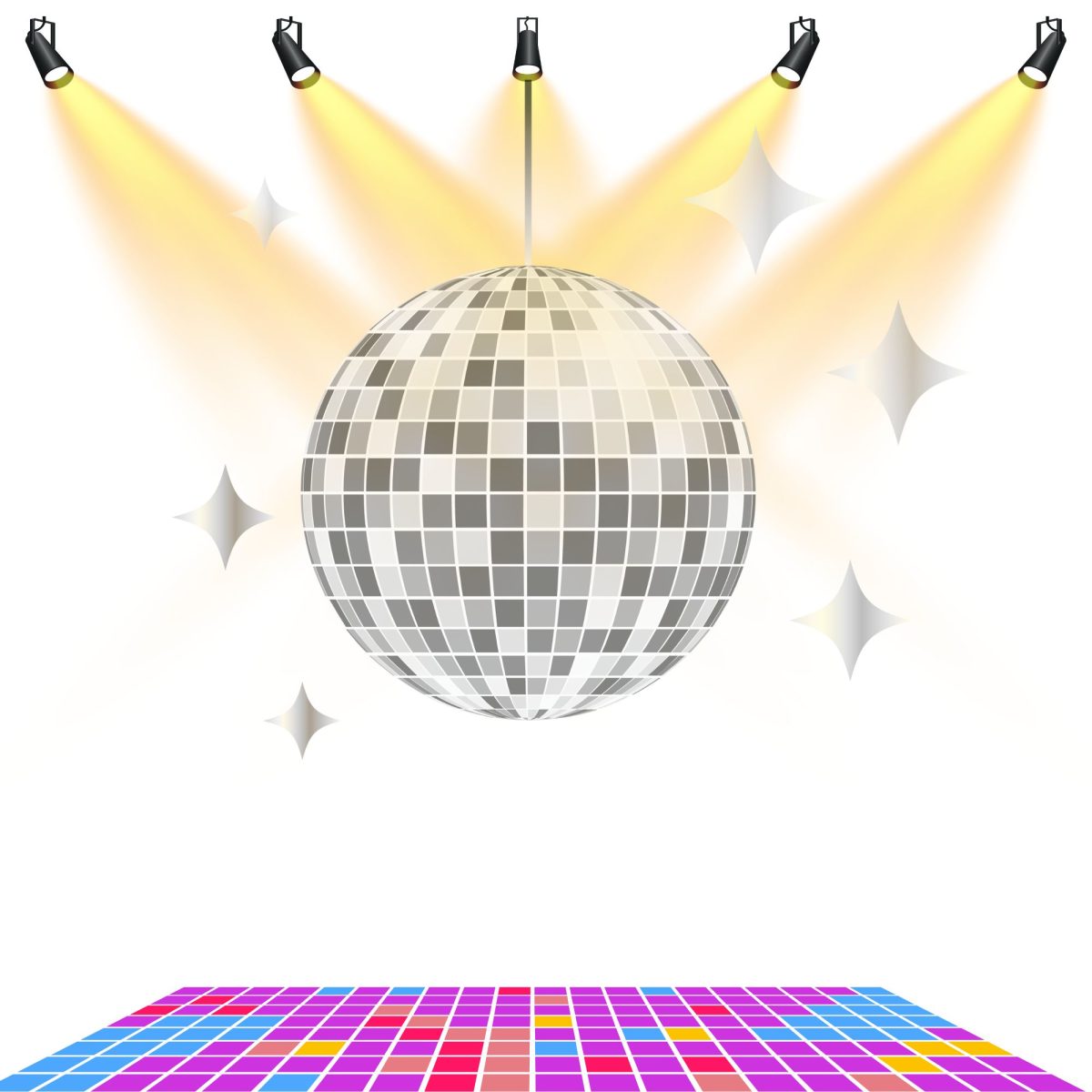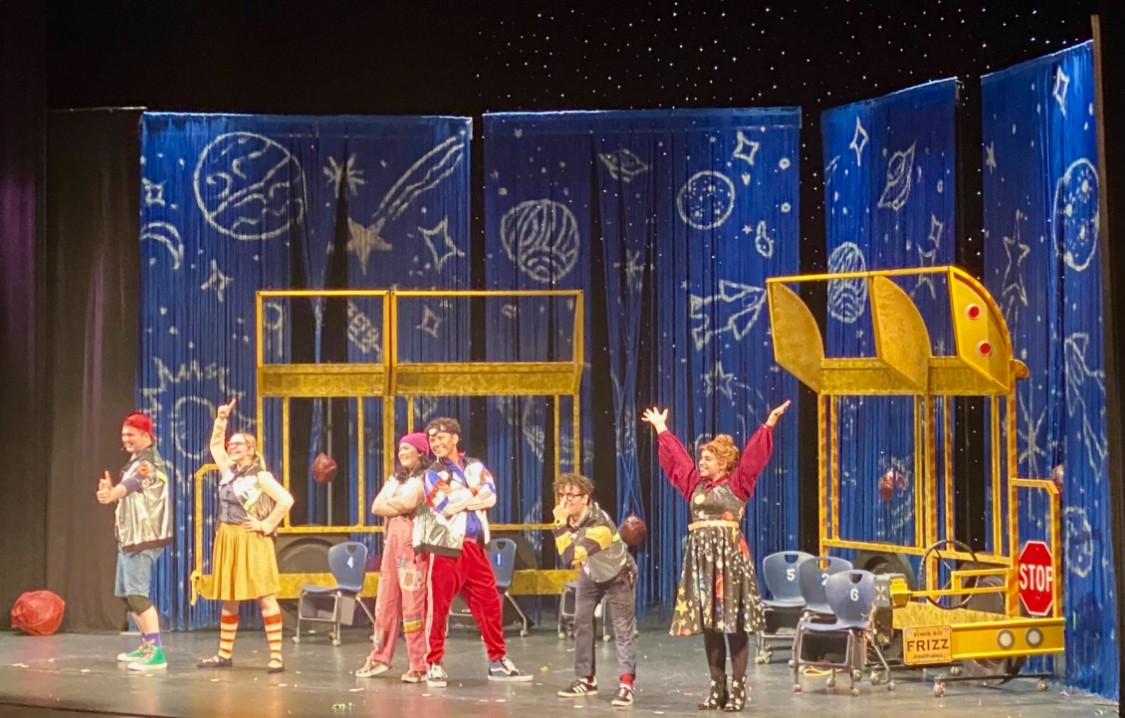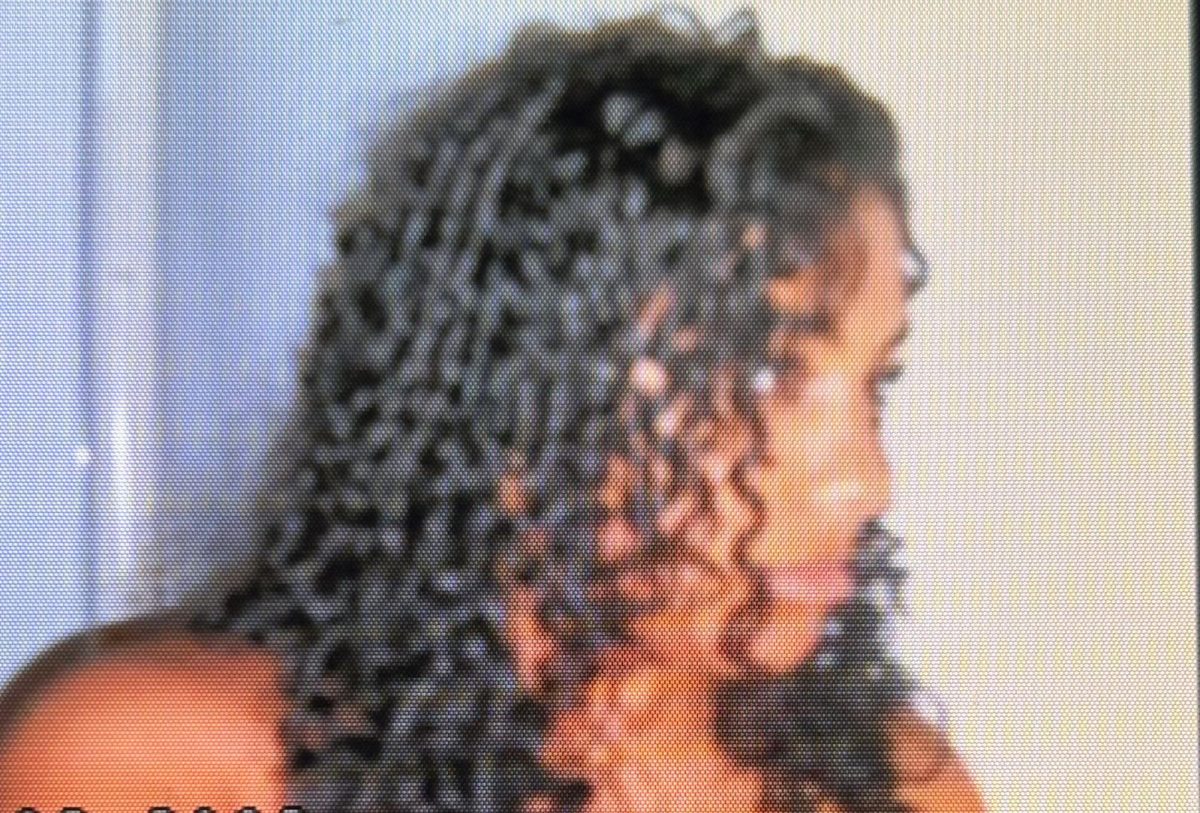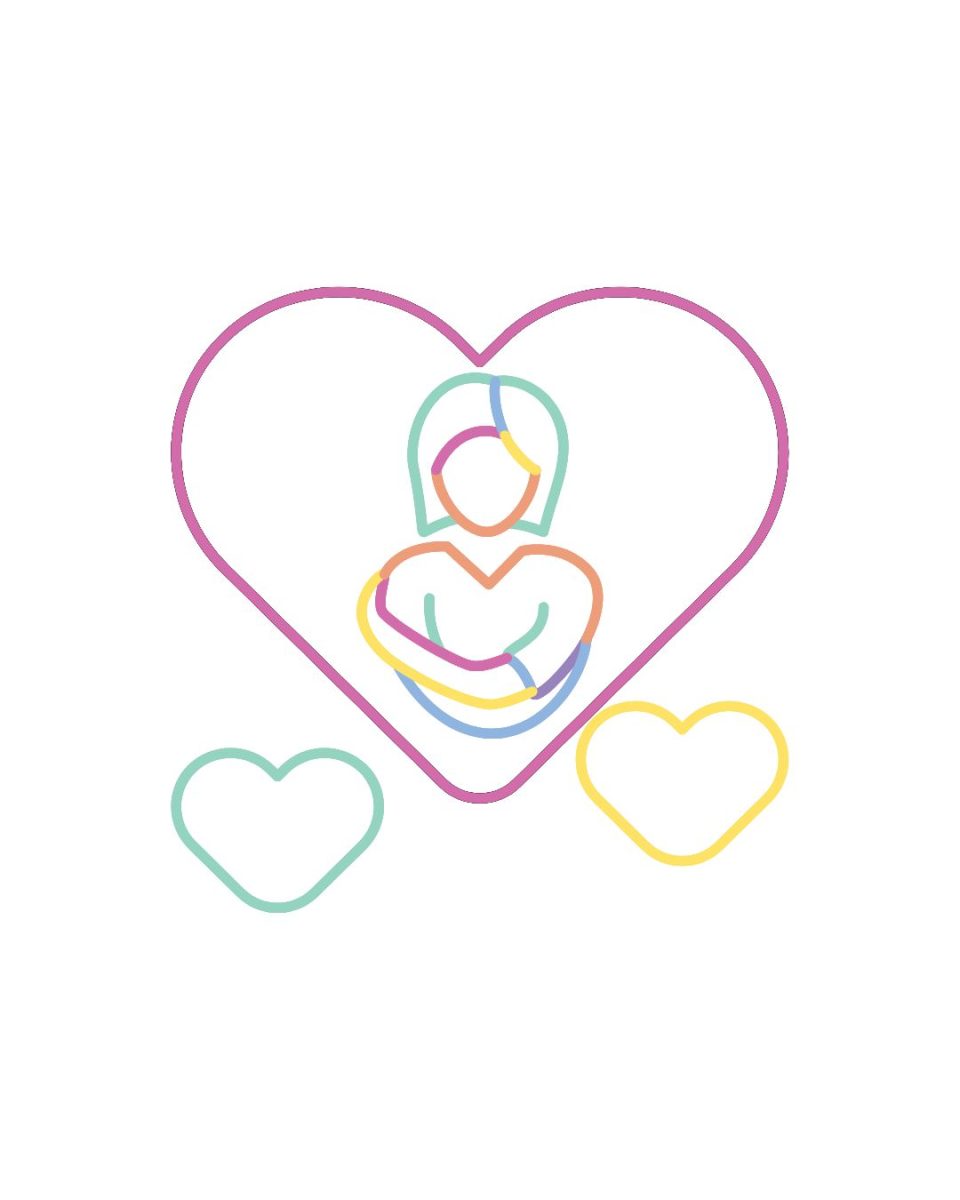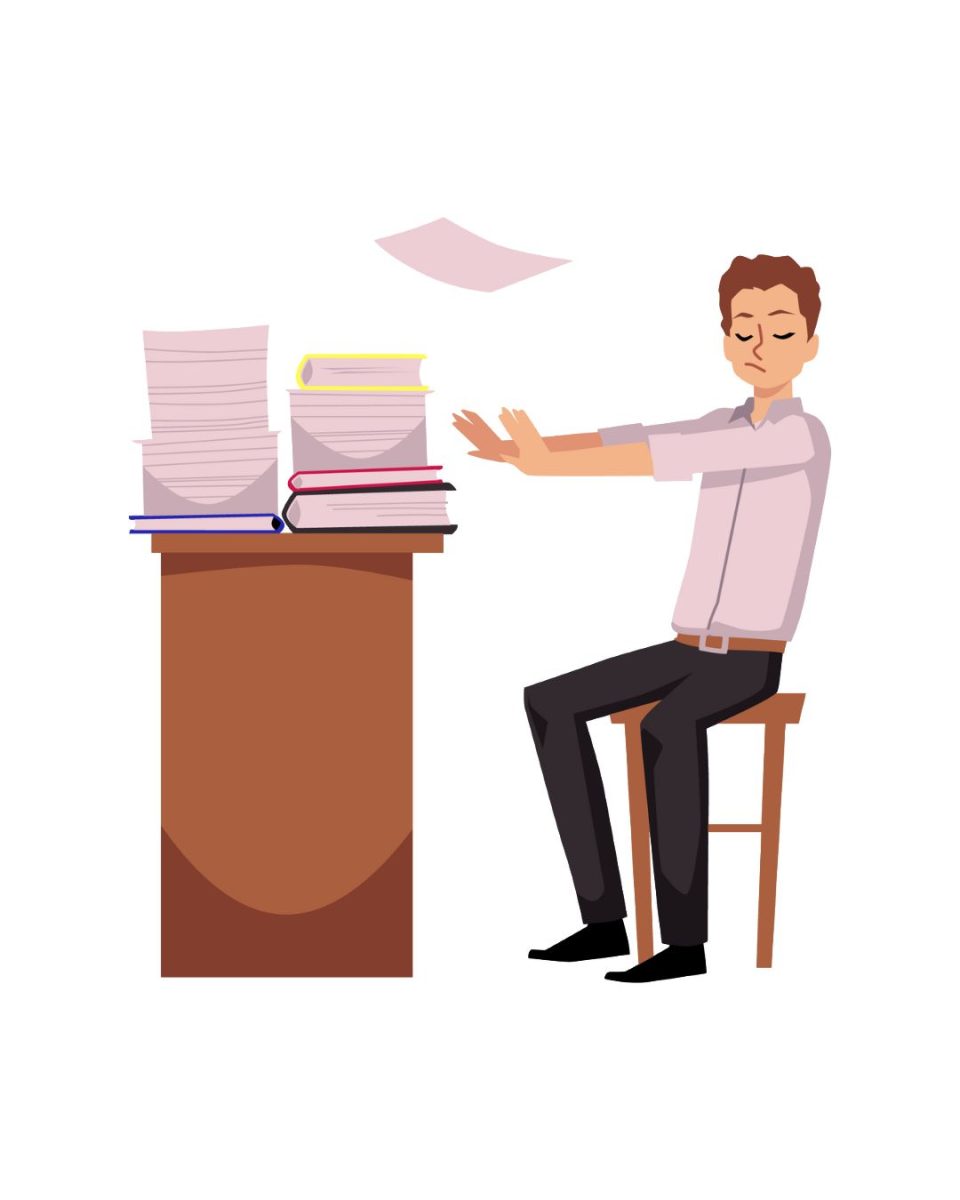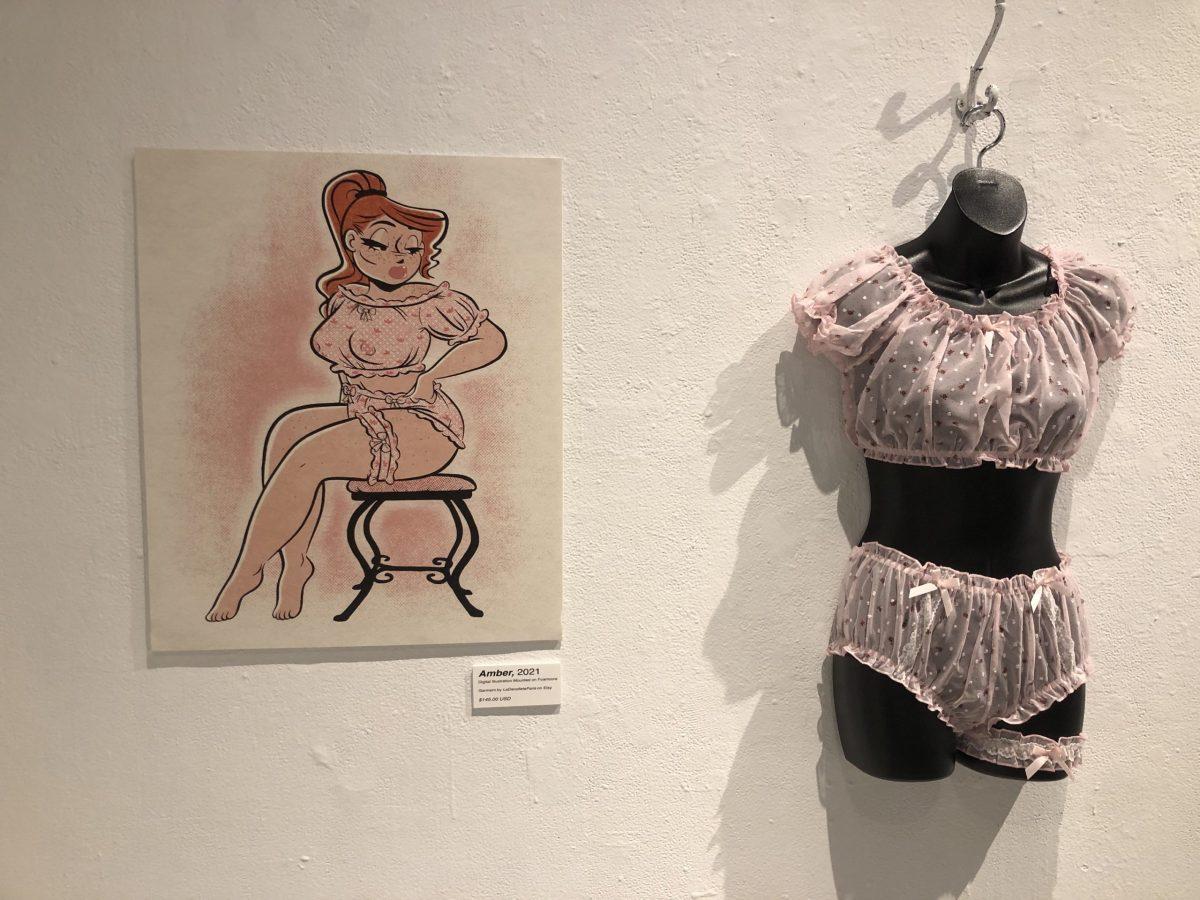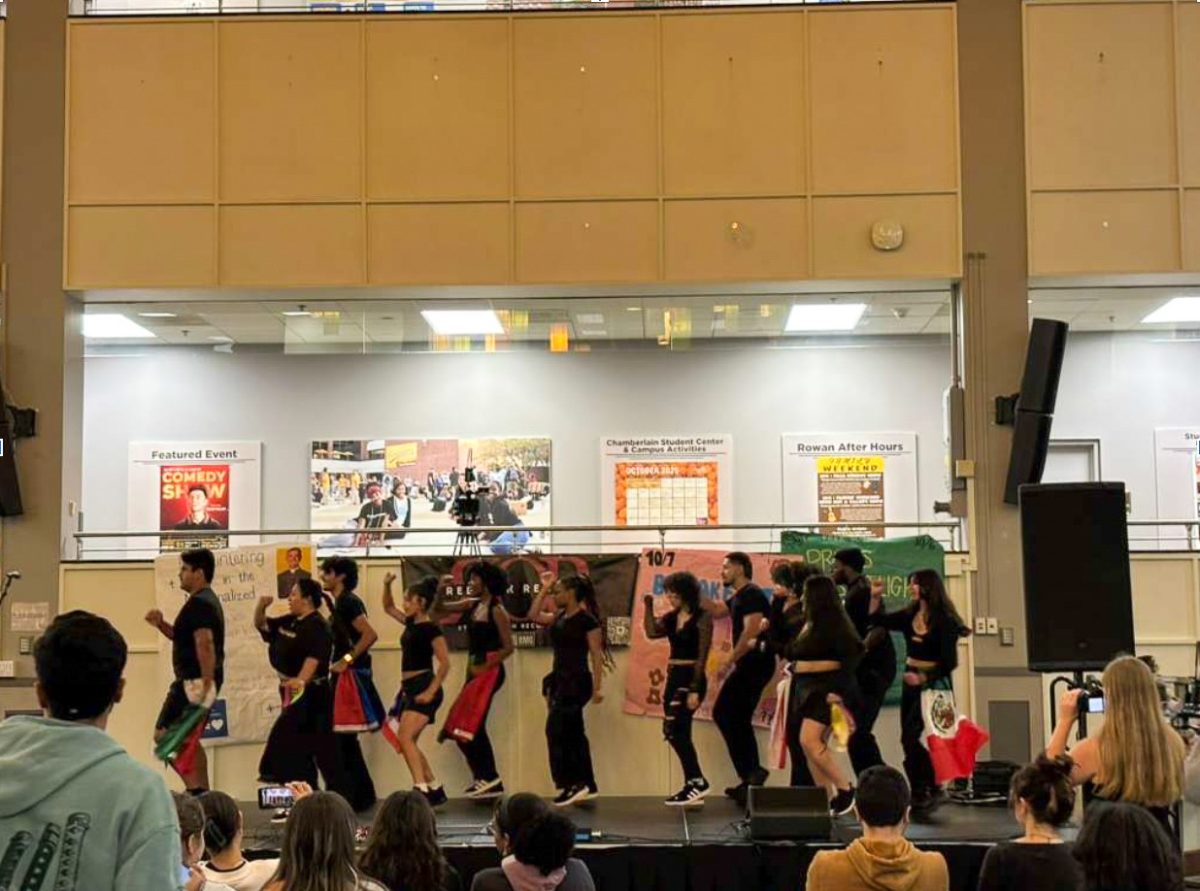My knowledge of art and the deep thought that goes into creating pieces worthy of a gallery show is pretty much none. Though walking into the small, wall-to-wall, white gallery in Rowan University’s art building, I didn’t expect to see illustrations of naked women of all shapes and sizes surrounding me. Walking past the pieces to greet the artist, I didn’t need much information to recognize that this girl had talent.
Rocking back and forth on her heels in chunky, white Fila sneakers and mint green pants, the artist admires her work alongside me. “Whimsical, yet… a little bit scandalous,” she comments bashfully as she clicks her rings together. Dainty, delicate pieces of lingerie from unique small businesses around the world hang along the walls on black mannequins begging to be touched.
Haley Askling, a studio art major, sits beside me, leaning back on her hands on the tile floor in the middle of her senior thesis gallery show. Four months and over four thousand dollars of work hangs around us like a naked mobile, illustrating not only her talent but the fate of her future.
“I really wanted to pursue something around the idea of pin-ups, but I didn’t know exactly what I wanted to do. There was a period of time where I wanted to do something based off of Playboy centerfolds and covers, but I decided against it because I felt like it would be replicating something that I didn’t necessarily design” she explains.
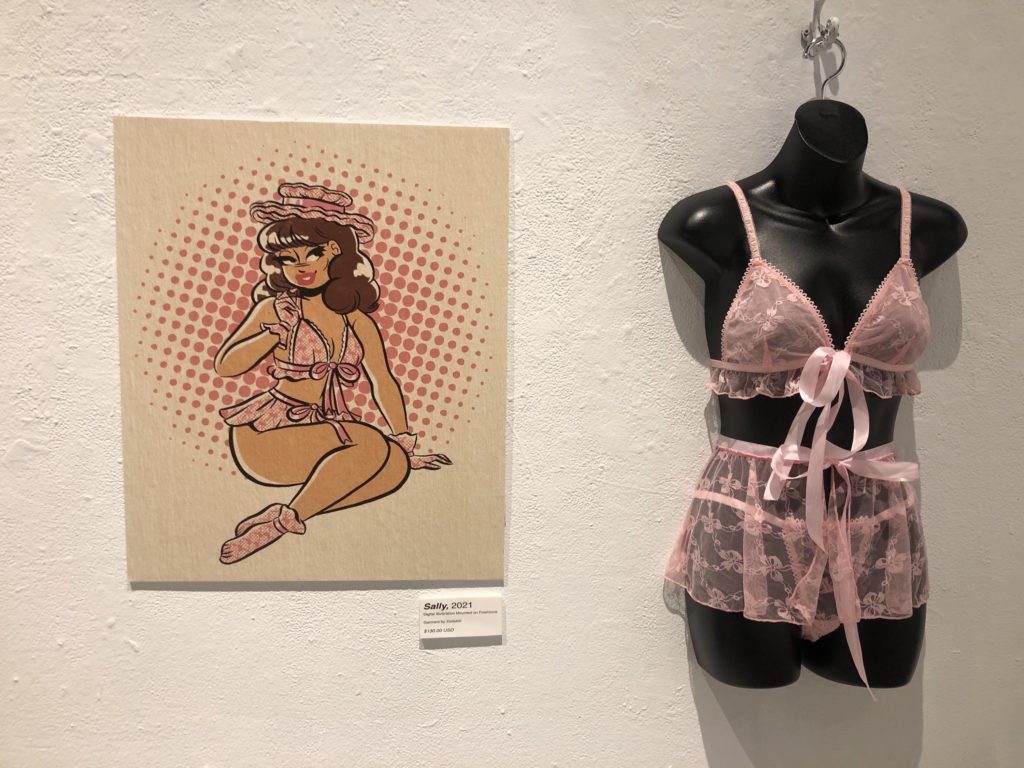
There are six main “ladies” of the show, as Askling refers to them, which are accompanied by the sets of lingerie. The show consists of 17 women, all hand-drawn and digitized by Askling. I can’t help but survey the gallery, as she frantically waves her hands around discussing her design process for these pieces, and wonder: where are the men?
“My family influenced my art a lot… don’t get me wrong I love my parents, they support me, but in high school, especially I think, they wanted me to make this art that was very whimsical and cutesy and like… something they didn’t have to worry about being NSFW,” Askling confesses to me without a single moment of eye contact and her hands still at her side.
Art is in her blood, with relatives dating back to the design of the Pillsbury Dough Boy and a grandmother who asked neighbors for leftover house paint when she couldn’t support both her family and her passion. With brows furrowed behind her large, Dahmer-style glasses, she looks up at the fluorescent lights, contemplating before continuing on her trip down memory lane and the start of her self discovery as an artist.
“My mom, more so than my dad, was… critical about my art. So when I was getting this criticism from my parents and they’re like… ’I really don’t think it’s a good idea for you to be making stuff like this because people are going to take it the wrong way and think that you’re… devious,’” she lets the last word fall from her mouth like a bad taste as she looks away.
I take a moment before I ask the question that was burning in my brain from the moment she began to let me into her past: “Do you think this is why you don’t draw men?” Without a moment of hesitation she responds “Yes,” and the topic falls off like a rock on the side of a cliff, plummeting into the icy waves.
“I was really inspired a lot by Archie Comics from when I was a kid. My grandma would always drop off old comic books whenever she babysat my brother and I. I was a quiet kid who just kinda… kept her head down – you put a comic book in front of me, and I’ll shut up and read it.” Looking around the room to the pieces adorning the walls, it’s clear to see that the comic style is her sweet spot: all the women look doe-eyed with expressive faces illustrated with vibrant feminine hues and delicate brush strokes.
Askling starts all her artwork on sketch paper with BIC mechanical pencils only. Then comes the line work with a Kuretake Bimoji brush pen, another item she is loyal to. After this is when the magic begins.
“The great thing about digital art is that when you mess up, you can very easily rectify your mistakes, but when you work in traditional mediums, it’s a lot harder to fix your mistakes. Especially trying to fix it without having it look like there was a mistake there to begin with, and I’ve realized I’m kinda sloppy when it comes to my work,” she chuckles, picking at a scab on her leg.
I gathered over the course of our time together that art is a competitive industry, and there is no paved career path for artists to follow. “Failure haunts me… or living a life of mediocrity. Does that sound pretentious?” she looks up at me frantically, hoping I haven’t gotten a new perspective on her. “I think every artist to some degree wants to be seen as, like, the titan of industry,” she says, leaning her head back staring at the ceiling and spreading her arms out wide, shaking them in emphasis. “But, it’s a pipe dream; it’s a cool dream to have but very few are able to achieve it. I honestly just want to be respected in my field and seen as somebody who knows what they’re doing.”
As the gallery begins to close around us, I can’t help but to focus on one specific moment we shared. “Do you think you’ll ever start to incorporate male subjects into your work or remain strictly a female subject-dominant artist?” The room falls into an eerie silence, the humming of the HVAC system filling the room with a low drum roll as if it is also anticipating her answer.
After a few more moments of silence, Askling picks her head up from toying with her white gym socks and looks at me for a second. “That’s actually a criticism Adam, my illustration professor, gave me. As an artist, to have a well-rounded portfolio, I should be incorporating men, which is fair. He suggested I start doing stuff around vintage cowboy art like the Marlboro man and stuff from the 1970s, but I need to devote some time to it because, personally, I find men harder to draw.”
To anyone that has stood within this art gallery over the course of the “Boudoir” exhibit, it would be baffling to think that an artist who can perfectly sculpt an array of different female body types would struggle with the opposite gender. Askling prides herself on how she captures every body type within her art, from pear shaped to hourglass figures, she feels it’s crucial to incorporate them all to give her art authenticity. Women have been coming into their own in the past few years, and it’s clear to see that this art encapsulates that every body of every woman is a work of divine art.
“Will you draw the men nude like you draw the women?” I ask as we exit the building into the cold night air. “Yeah!” she exclaims, as we split paths going our separate ways. A moment later, I hear a voice in the distance call out “Ya know, equality!”
For questions/comments about this story tweet @TheWhitOnline.



